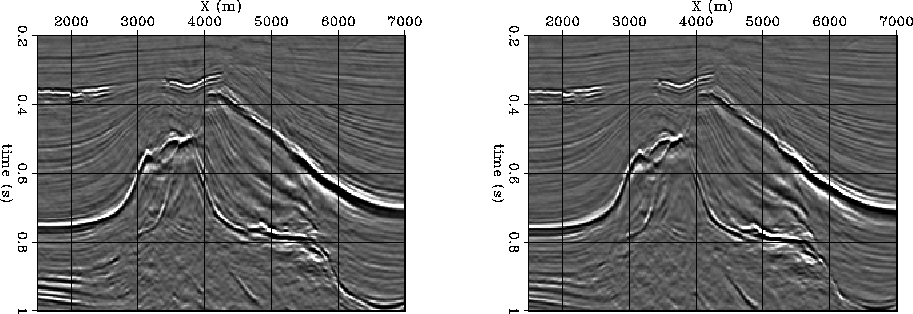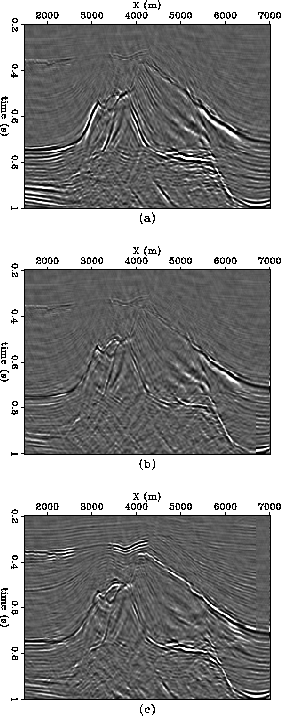 |
Figure 4 Seismic sections extracted from the Elf L7D dataset after residual migration with
 |
Figure 5 compares the raw difference between the two panels in Figure 4 with the difference after warping with the cross-correlation algorithm, and the shaping filter algorithm. Comparing panel (a) and panel (b) shows the energy in the cross-correlation difference section has decreased significantly, and the algorithm has aligned the main events well. The RMS amplitude decreased a factor of 0.6. On the other hand, comparing panels (a) and (c) shows the shaping filters have not nearly been as successful: although the flanks of the salt have been well aligned, other parts of the section are less well aligned than before warping. The RMS amplitude in panel (c) has only been reduced by a factor of 0.8.
|
diff
Figure 5 (a) Raw difference between the two panels in Figure 4. (b) The difference after warping with the cross-correlation algorithm. (c) The difference after warping with the shaping filter algorithm. |  |
Although I tried a range of parameters, the shaping filter results could probably be improved by tweaking them further. There are many possible options with regard choice of roughening filter and number of iterations, and it is difficult to find the best set.